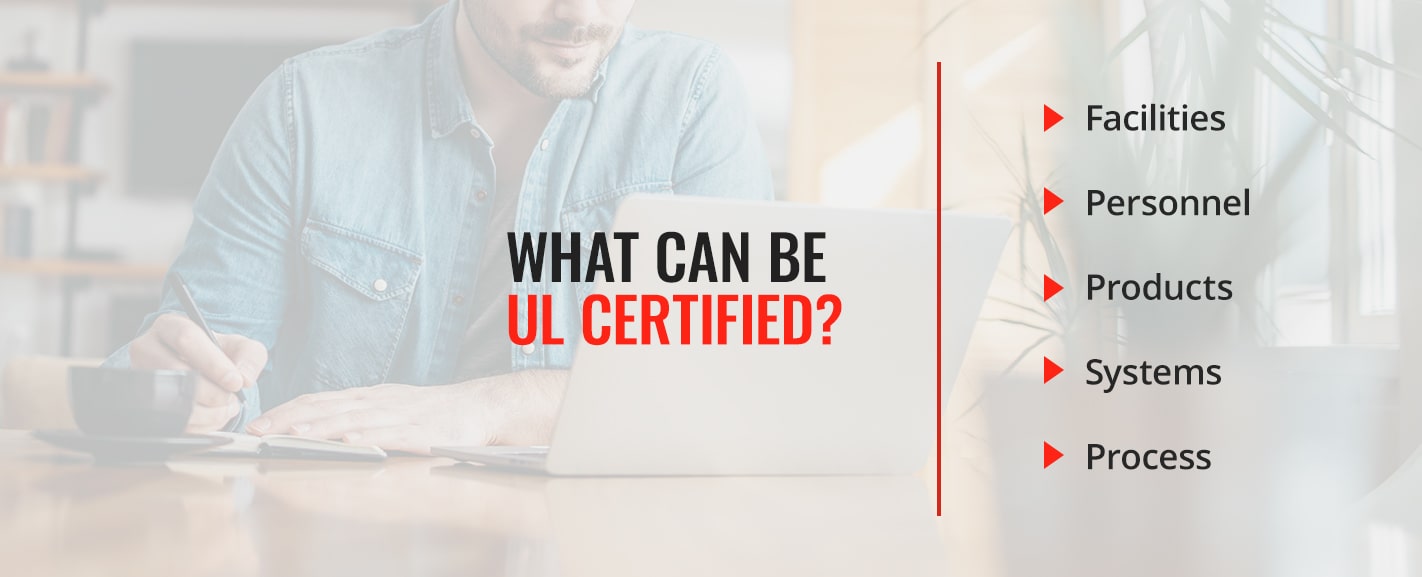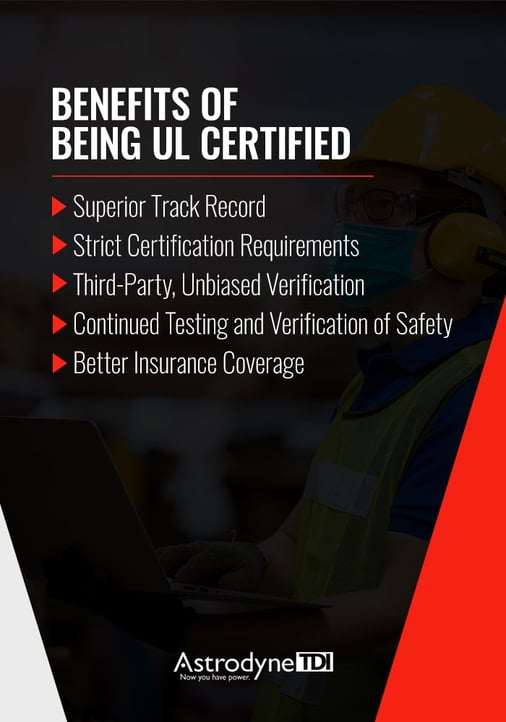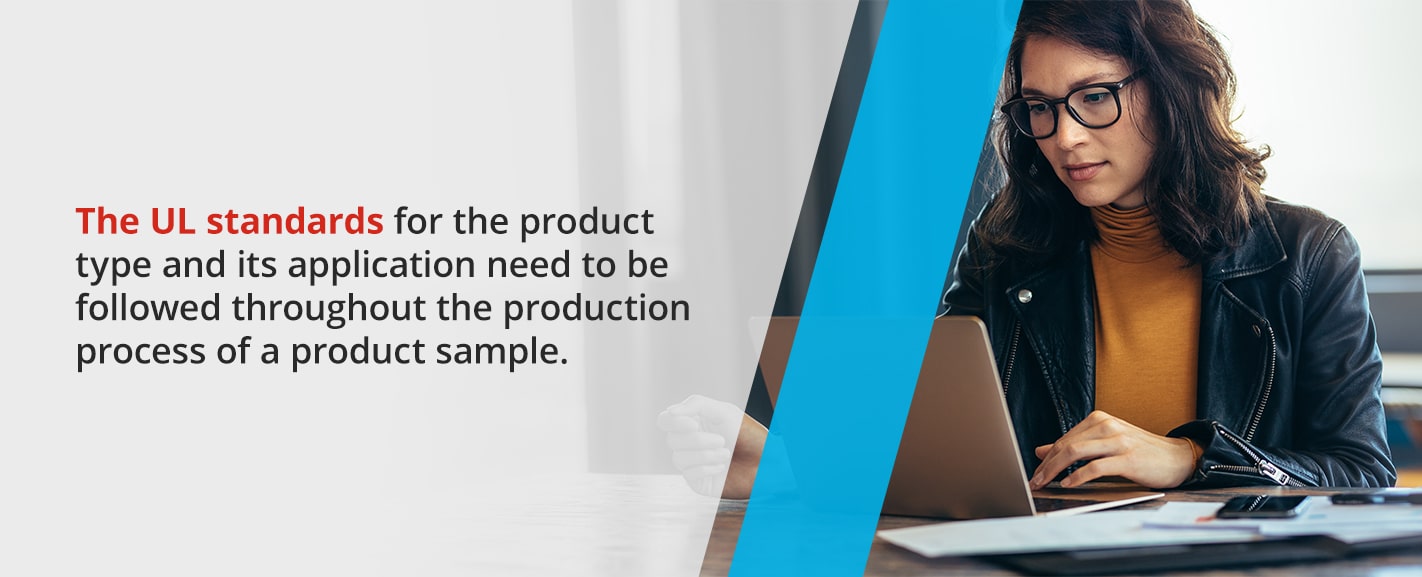RESOURCES
UL Listed vs UL Recognized Power Supplies
OSHA mandates the safety approval of electrical equipment, like power supplies, by a nationally recognized testing laboratory (NRTL). UL Certification is listed as an approved testing lab, amongst 17 other organizations currently certified to OSHA and NRTL, including TUV and ETL. Product manufacturers can use any NRTL accredited lab to obtain product safety approvals including IEC/EN/UL 62368-1, IEC/EN/UL 60601-1, or IEC/EN/UL 61010-1 certification.
NRTL Safety Certification Requirement
For power supplies and EMI filters, which fall into this category, the IEC (International Electrotechnical Commission) Certifications are required. Most power supplies should be 'Recognized' by an NRTL accredited lab. However, not all these products have this distinction. There are exceptions to safety recognition marks for power supplies that will still meet OSHA requirements.
Power supply devices that act as standalone external sources receive a UL Listed certification or a Listed Mark from an accredited lab. Other marks of certification, such as the ATEX or CE from Europe, aren't permitted by OSHA standards for use in the United States. As a result, products with these labels require additional testing from a U.S. NRTL to obtain a recognition mark by OSHA.
Listed vs. Recognized Power Supplies
NRTL safety-approved products can be either 'Listed' or 'Recognized' by an accredited lab. These terms are used to differentiate between an end-user type of product which would be ‘Listed’ versus a “component” which would be ‘Recognized’ and used within the listed end-product device. Power supplies can overlap the two groups of goods that use these certification terms. As such, some power supplies may have a ‘Listed’ or a ‘Recognized’ Mark as their label. Both approvals indicate the same level of safety. However, they have different advantages depending on how the device will be used.
What Does "UL" Mean?
UL is the name for the Underwriters Laboratories, which provides third-party certification for manufacturers, systems, and more. The use of third-party standards prevents special interest from biasing the test results or awards. As a third-party testing service, UL maintains its certification integrity in holding products to strict standards. However, as previously mentions, there are many third-party labs that can provide the same certifications as UL.
The idea for a third-party lab to test equipment for safety first appeared at the 1893 Chicago World’s Fair. At this venue, the founder of UL, William Henry Merrill, Jr., proposed his goal to create a company to improve safety. The idea took off with two major funding providers, the Western Insurance Union and the Chicago Underwriters Association, contributing startup money. The following year, UL began as the Underwriters Electric Bureau.
Since its founding, the company continues to evolve, creating new standards to uphold everything from products to personnel. With its long history of providing safety standards and testing, the UL label has gain recognition as a signifier on many products. Even though many consumers look for the UL Listed stamp on their products to verify safety, there are other ‘Listed’ marks that carry the same safety certifications, such as ETL Listed and TUV Listed. Commercial users of products look for ‘Recognized’ marks on components to ensure they construct devices with tested, proven parts in them, which can be provided by ETL, TUV, or UL.

What Can Be Certified by NRTL?
Safety certifications extend beyond products — facilities, personnel, systems, and services can also receive safety certifications. The process for awarding certification for each of those categories differs from the testing done for products. That said, the process is just as rigorous to ensure it meets NRTL and OSHA’s stringent standards.
Facilities
A facility that receives NRTL or OSHA Safety Certification proves its performance for safety and health care standards. Depending on the type of operation, third-party labs can also look over and offer certification for food safety, digital security, device testing, supplier auditing, and medical equipment evaluation.
The review process to receive facility safety certification includes experts looking over plans, assessing the functioning of building components, ensuring installation code compliance, and checking for safety issues. Sites that receive such recognition showcase effective, safe operations for workers.
Personnel
The personnel who work at a facility may also receive NRTL or OSHA Safety Certification. The evaluation process looks at the skills and qualifications of said workers. This level of certification indicates that workers have the ability to perform their jobs to industry standards safely and successfully.
Products
Safety certification for products includes Listed, Recognized, and Classified. These levels of marks indicate the application of the device or its testing level.
- Safety (UL, TUV, or ETL) Listed products operate as stand-alone devices and receive a ‘Listed’ mark (i.e. consumer electronic devices). Power solutions that receive ‘Listed’ marks include external adapters and some power distribution units.
- Safety (UL, TUV, or ETL) Recognized products operate as components within a stand-alone device. Power solutions that receive ‘Recognized’ marks include embedded power supplies and EMI filters because they operate as components to end products.
- Classified products pass a test of a specific condition or state of operation.
The types of tests for NRTL Safety Certification determine whether the device meets the given standards for the type of mark being applied for. A product submitted for UL, ETL, or TUV Listing will undergo a significantly greater amount of testing partly due to the enclosure tests. A product submitted for UL, ETL, or TUV Recognition will not have an evaluation of an electrical, fire, or mechanical enclosure.
Systems
Safety certification for systems looks at how successfully the separate components in a system work together. Both processes and products can contribute to the overall functioning of a system, so testing the system as a whole verifies correct installation and operation. It can also identify issues before they cause major problems.
Process
Safety certification for processes ensures a business’s operations meet industry requirements and comply with regulatory standards.

Benefits of Being Safety Certified
Earning NRTL Certification on a product elevates the product. The benefits of seeking certification from UL, ETL, or TUV for power supplies, EMI filters, or other products include the following:
1. Superior Track Record
For more than a century, the UL Safety Certification has been a trusted name among industry leaders and consumers alike. UL Safety Certifications hold international recognition, especially with its integration of international standards into its certifications, such as the combined IEC/UL/CSA/EN 61010-2-201 certification for power supplies.
Both individuals and businesses look for this label when evaluating products — consumers rely on the safety standards of Listed goods, and manufacturers may look for Recognized components when creating new products to facilitate future certification of their finished items.
2. Strict Certification Requirements
The safety certification process is strict to ensure products meet safety, environmental and functioning standards. UL, TUV, or ETL certified products exhibit their effectiveness, reliability, and durability following some of the harshest testing available. Additionally, products must meet safety standards for fire, mechanical and electrical safety.
3. Third-Party, Unbiased Verification
As a third-party verification service, UL, TUV, and ETL do not have a financial interest in certifying any products. Without conflicts of interest, they can provide unbiased testing and approval of products. This unbiased, third-party certification lends additional credence to the certification and the trustworthiness of products that carry it.
4. Continued Testing and Verification of Safety
NRTL accredited labs don't only certify products once. They retain the integrity of their mark by ensuring products with it remain in compliance with their standards. To do so, labs continue to conduct audits to ensure products maintain their quality. These unannounced audits verify that randomly selected products still stand up to the standards.
The strict standards of NRTL and OSHA are reliable and consistent. These random tests of certified products ensure that everything is certified and consistently meets standards even long after earning their initial mark.
5. Better Insurance Coverage
Any product or business that receives safety certification may qualify for better insurance coverage. The Safety Certification mark indicates a high standard of safety, which could allow for a company to get better insurance rates or coverage.
What Does It Mean to Be ETL, TUV, or UL Listed?
Companies that produce products that meet the NRTL standards for that type of product can earn the ‘Listed’ certification. This rating also permits the makers to test and label their products with the UL, ETL, or TUV mark.
Because ‘Listed’ products must operate as standalone items, they must meet strict standards. Additionally, since these goods are often used by consumers, they must meet safety standards under typical use conditions. For example, electronic products, such as power supplies that bear the UL, TUV, or ETL Listed mark, must perform without undue risk of electrical shock or fire.
To obtain a UL, TUV, or ETL Listed Mark, a product may need to undergo additional testing to meet specific listing requirements by state mandates. Specifying the state or the local area for the testing ensures the product’s Listed mark meets the standards for that area. Some products may need to undergo extra testing depending on the application or location of the goods’ sales. Common local tests include energy efficiency and functional safety.
With a Listed mark, the product obtains the benefits of safety certification, which include greater trust from consumers and a mark to verify the safety of the product.
What Is the Difference Between Listed and Recognized?
‘Listed’ and ‘Recognized’ products meet safety certification requirements for safety set forth by Nationally Recognized Testing Laboratory (NRTL). Both marks indicate thorough testing after production to back up their claims of meeting these standards. Additionally, the use of a third-party testing method means each mark appears after an unbiased examination of the products.
The difference between these marks is the applications for the products they appear on. Consequently, the marks themselves have significant design differences. Products that bear Listed labels on them have readily identifiable marks. Recognized products have fewer recognizable marks.
Recognized products have applications as components of a larger system. Most consumers never encounter the 'Recognized' mark on these components. However, the 'Recognized' mark is highly sought after in the industrial sector.
Classified products don't undergo the same complete level of testing as Certified goods. Classified products are only tested for specific situations that the mark indicates, such as operation in given conditions. Additionally, the product includes information about the scope of the classification.
Specifically, power supplies frequently fall into the category of goods that require a Recognized mark. However, some separate power sources use the Listed mark instead when they're used as stand-alone equipment such as lab power supplies used for product testing.

How to Get Safety Certification
Obtaining safety certification requires multiple steps that begin before production starts on a product. The NRTL standards for the product type and its application need to be followed throughout the production process of a product sample. For instance, power supplies intended for internal use as components only require Recognition, whereas those used externally have ‘Listed’ as the mark.
After creating a product sample, it must go for testing. Prior to shipping the sample, the manufacturer must complete all forms and send them to the NRTL accredited lab. They also need to pay a deposit and shipping costs to have the product safely delivered to the lab.
Only after passing the applicable testing, electrical evaluation, and constructional evaluation can the product receive approval to use a mark, indicating its certification. The safety certification cost will depend on the product tested and the amount of testing required. Underwriters Laboratories indicates that products that use UL Recognized components require less testing.
Testing Safety Certified products doesn't end with obtaining approval from the initial test. Accredited NRTLs have the right to conduct unannounced audits of products at any time after the original test. These audits ensure the products continue to meet the most up-to-date standards.
During product development, the manufacturer can perform tests for components that require marks. However, third-party labs are required to write the reports, conduct the electrical and mechanical evaluations, and address the standard clause by clause. This can help ensure the integrity of the certification. Ultimately, in-house testing can cut down the time required to get product approval and a mark.
Today, Safety Certification for industrial power supplies combines former standards into one that meets international and American requirements for industrial power supplies. This combination updates former standards that once required multiple tests.
Contact Astrodyne TDI for More Information About Providing Safety Certification
For power supplies designed for performance, longevity, and safety, partner up with Astrodyne TDI.
With our testing capabilities, we can reduce lead times and get full safety certifications to our clients faster. Astrodyne TDI power supplies and EMI filters can include UL, TUV, or ETL certifications. If the UL certification is a requirement, Astrodyne TDI will work closely with the customer to ensure proper certification is obtained. Contact us at Astrodyne TDI for more information about our power supplies or certification lab.

